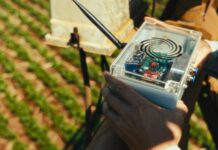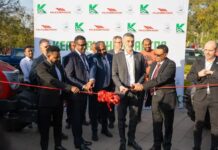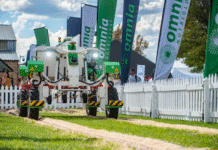(DLG). From 9 to 15 November, the Systems & Components trade fair at Agritechnica 2025, the world’s largest agricultural machinery trade fair, will showcase the next generation of assistance systems for mobile working machines. As the off-highway industry—including agricultural and construction machinery—moves toward greater connectivity and semi-autonomous systems, the demand for intelligent operator support is rapidly increasing.
Whether navigating rough terrain or managing multiple machines simultaneously, operators face growing complexity in their daily tasks. Modular assistance systems, powered by AI-integrated controllers, robust sensors, and cloud-based services, are stepping in to relieve this burden. These technologies not only enhance productivity and safety but also offer a sustainable response to the skilled labor shortage affecting the industry.
“Autonomous functions can be a great support for operators,” says Petra Kaiser, Brand Manager of Systems & Components at DLG (German Agricultural Society). “The wide variety of machines on the market drives innovation in assistance systems, which will be reflected both at the exhibition stands and on the Expert Stage in hall 17.”
The Systems & Components trade fair is the leading international meeting place for suppliers in agricultural and off-highway machinery. Held in Halls 15, 16 and17 at the Hanover exhibition grounds, it showcases advanced components and technologies, serving as the ideal complement to Agritechnica, which covers 23 halls in total.
A central theme at the Systems & Components exhibition will be operator support in the cab. Advanced systems featuring smart sensors and intuitive controls are designed for both skilled operators and less experienced users. From simplified leveling and payload measurement to electronic vibration damping and motion control, these functions help automate repetitive tasks and improve overall workflow efficiency. Collision warnings and blind spot monitoring further contribute to safer operations, even in poor visibility conditions.
The evolution of Human Machine Interfaces (HMI) is another highlight. Ergonomic joysticks with optical and haptic feedback, along with glove-operable high-resolution displays, are setting new standards for usability. The next frontier: Extended Reality (XR) technologies that overlay digital terrain models and machine data directly into the operator’s field of view. These immersive interfaces aim to build trust and accelerate learning, turning assistance systems into real-time training tools.
Self-learning systems are also on the increase. By analyzing sensor data during operation, machines can offer immediate feedback and suggest optimized techniques, such as adjusting bucket angles or reducing dump heights. This dialog-based approach actively includes the operator in performance improvements, making the machine a collaborative partner.
In agriculture, assistance systems are already transforming harvesting operations. Combines and forage harvesters use stereo cameras and automation to adjust driving speed, control discharge chutes, and detect transport vehicles for precise crop placement. Switching between field and road modes is also streamlined through automated functions like activating warning lights and adjusting engine settings. A key innovation in this space is Tractor Implement Management (TIM), which enables bidirectional communication between tractor and implement. This ISOBUS-based technology allows the implement to control aspects of the tractor’s behavior—such as speed, PTO engagement, and lift settings—based on real-time needs. The result is smarter, more sustainable farming that protects soil and conserves fuel.
As autonomy advances, manufacturers are turning to sensor kits and edge computing to build customizable assistance systems. Ultrasonic, radar, and multi-camera setups offer plug-and-play flexibility, while embedded multi-core processors enable AI-driven features like 360-degree monitoring and centimeter-accurate navigation via RTK.
Systems & Components 2025 will offer a compelling preview of how digitalization and connectivity are reshaping mobile machinery.
Read the full article here








